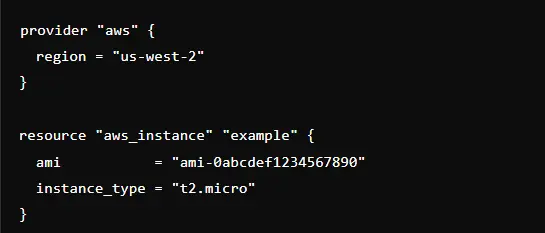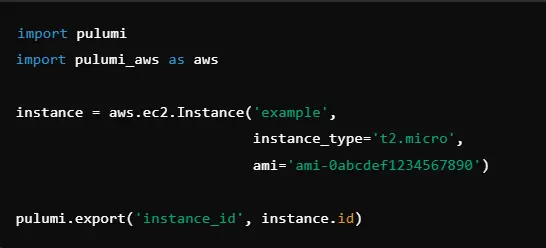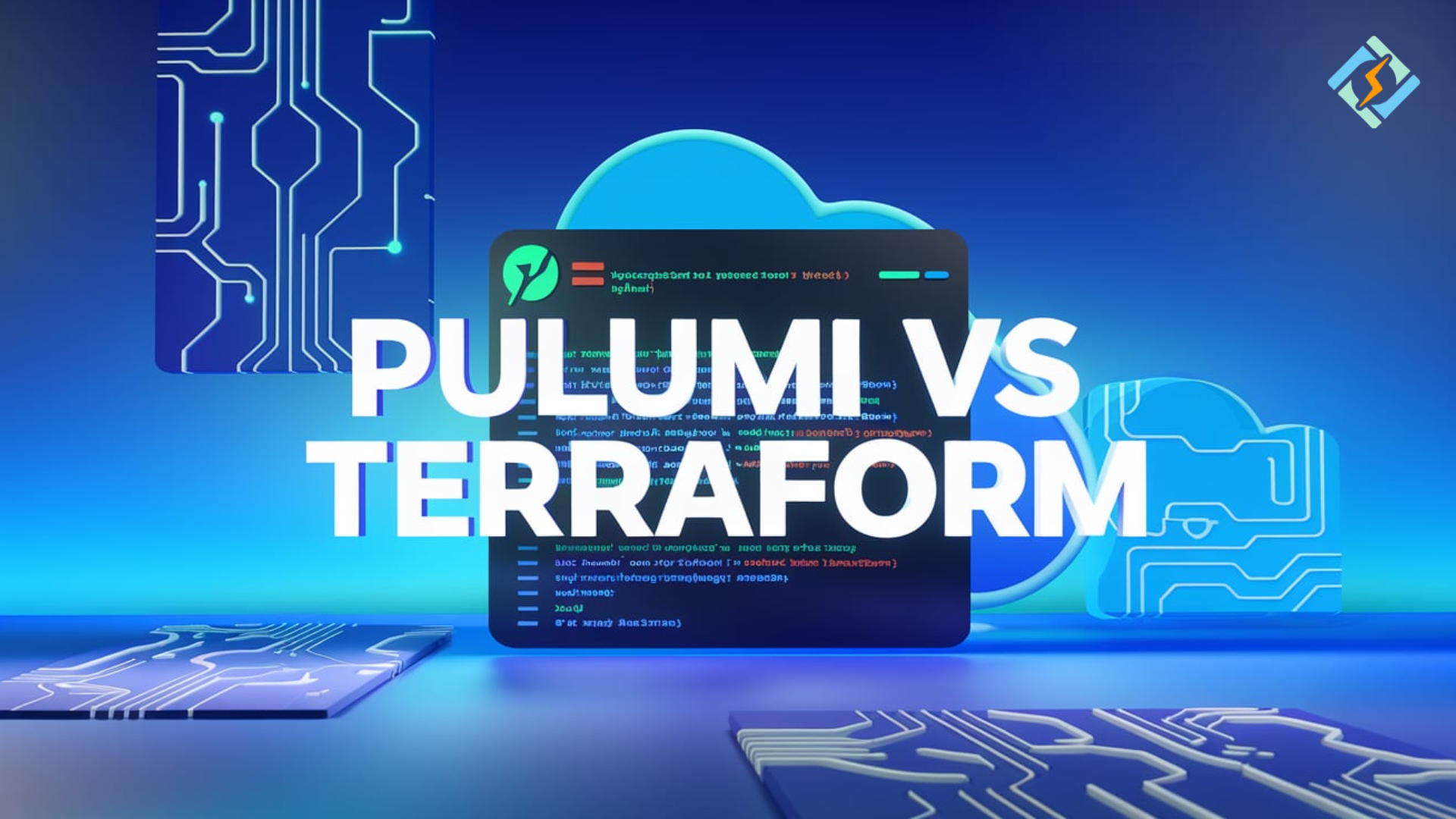With the changing needs of cloud infrastructure management, Infrastructure as Code is what changes the game in today’s modern DevOps. This allows developers and their operations teams to use code instead of manual configurations in order to automate, manage, and provision the infrastructure. Out of the wide ranges of IaC tools available, Pulumi and Terraform are probably some of the most well-used and popular ones among users and the market.
Terraform, being HashiCorp’s product, is one of the strongest providers for managing multi-cloud environments using its domain-specific language, HCL or HashiCorp Configuration Language. Pulumi is one of a kind because general-purpose programming languages like Python, JavaScript, TypeScript, and Go can be used to define infrastructure. Now comes the question in view: Pulumi vs Terraform, which is best suited for your needs? In this article, we are going to explore the differences, features, and roles of both tools in detail and provide a detailed analysis of their capabilities.
We will also discuss how CyberPanel enhances IaC management and answer the top 7 FAQs for a well-rounded perspective.
What is The Terraform?
It is an open-source tool. It allows users to define and manage infrastructure in a declarative way. It uses HashiCorp Configuration Language (HCL) to define the resources that need to be created, modified, or destroyed. This means you write your infrastructure code in a way that describes the desired state of the infrastructure.
Key Features of Terraform:
Declarative Language: Terraform uses HCL, natively designed for infrastructure management. This way, you can write down what you would like to see, without the details of procedures.
Execution Plans: Terraform creates an execution plan, which shows precisely what actions will be taken to bring the system into the desired state. The user may review the changes before they are applied.
Get exclusive access to all things tech-savvy, and be the first to receive
the latest updates directly in your inbox.
Resource Graph: Terraform builds a dependency graph for all the resources. In this manner, it can take the required steps at an appropriate time without any kind of confusion or mess.
State Management: The state of the infrastructure is maintained by Terraform through a state file. It effectively manages the resources along with keeping track of all the changes.
Example Code


In this example, Terraform provisions an instance of EC2 AWS. Defining a provider, region, and instance type makes it easy to have manageable and versioned infrastructure.
What is Pulumi?
Pulumi is an open-source tool of IaC and is used for defining infrastructure within the cloud using various familiar programming languages like Python, JavaScript, TypeScript, Go, and C#, to name a few. It is a huge plus point for organizations with experience background in software engineering as you can directly reap existing skill sets and tools for the management of infrastructure.
Key features of Pulumi:
General-purpose programming languages: Pulumi does not make use of the HCL like Terraform does, but instead makes use of general-purpose programming languages in the definition of logic related to infrastructure, which is rather flexible.
Real-time update: Pulumi will also provide real-time updates relating to the state so that one will know at any one given time what his or her infrastructure will look like in the process of its development.
Rich Ecosystem: Pulumi also supports many cloud providers and services, which enable users to manage multiple cloud environments without much hassle.
Output Handling: The Pulumi programming model supports dynamic outputs and intricate logic so that it becomes a more efficient form of infrastructure management.
Python Code Example:



In this Pulumi example, we use Python to define an AWS EC2 instance. The instance ID is exported, providing an easy way to reference it in other parts of the code or output.
10 Pulumi vs Terraform Differences
1. Language Support
Pulumi vs Terraform. The difference between the two lies in language support. Pulumi uses general-purpose programming languages like Python, TypeScript, Go, and C#. This allows developers to write infrastructure code in familiar languages. Terraform, on the other hand, uses only HashiCorp Configuration Language (HCL) for writing infrastructure configurations. This makes Pulumi more appealing to software developers and more convenient for users focused on infrastructure.
2. Coding Style and Flexibility
Pulumi has an imperative coding style, so users can create complex logic, loops, and conditionals that exist in general-purpose languages. This makes it more flexible when developing dynamic resources. Terraform, on the other hand, uses a declarative style: it describes what the final state should look like, and the tool will figure out how to get there. This makes code easier to read and maintain but potentially less flexible than Pulumi for intricate programmatic control.
3. Learning Curve and Onboarding
Learning Curve: Pulumi and Terraform comparison have differences in the learning curve. Terraform uses HCL, which is highly very easy to learn; plus, DevOps people aren’t necessarily software developers and can easily learn how to use Terraform, whereas Pulumi uses the language; thus, when working with the language itself it would be easy for you to onboard; if it’s not familiar comparisons showgot a lot to learn;
4. State Management
A vital area of comparison between Pulumi and Terraform lies in state management. Terraform relies on terraform.tfstate files, either locally or remotely if more than one person is involved. Pulumi, on the other hand, will use its managed service named Pulumi Service by default for state management. Such a service natively supports encryption, and history tracking, and also has an effortless interface. However, Pulumi may also be set up to use other storage backends for custom configurations.
5. Community and Ecosystem
Terraform is more mature, is larger in size, and the overall ecosystem with strong support by the community, a much larger number of modules available, and very rich documentation. Pulumi is a smaller but active development team and it allows usage of several programming languages. The size of the community has an impact on how large a pool of reusable modules is available and also what expertise is shared in Pulumi vs Terraform.
6. Resource Providers and Plugins
Because of its age and the fact that it has the backing of HashiCorp, Terraform natively supports more providers of resources. Pulumi can utilize those providers using its Terraform bridge; however, this integration requires additional configuration or adaptation sometimes. This impacts the out-of-the-box experience in Pulumi versus Terraform.
7. Reusability and Modularity
Terraform excels with its module ecosystem, which allows for easily finding reusable code for common infrastructure setups. In Pulumi vs Terraform, Pulumi lets you build reusable code components using standard programming paradigms such as functions and libraries, which is more flexible but requires more development effort.
8. Infrastructure Drift Detection
It identifies and corrects infrastructure changes made outside the IaC tool, which differs in Pulumi and Terraform. Terraform natively has drift detection and reporting. Drift detection is supported in Pulumi but requires custom solutions or extra code for full functionality.
9. Error Handling and Debugging
With the use of programming languages in Pulumi, it’s able to take advantage of all the built-in features of the language to allow for better error handling and debugging, which developers then find and correct with much ease. Terraform is more limited in terms of error messages and debugging capabilities since it is bound to its configuration language.
10. CI/CD Pipelines Integration
Both Pulumi vs Terraform can be integrated into CI/CD pipelines. However, Pulumi is generally easier to integrate with existing software development workflows due to its support for programming languages. Terraform needs additional scripts and tools to be integrated effectively into CI/CD environments, although it is widely used in such setups.
5 Pulumi vs Terraform Similarities
1. Infrastructure as Code
Pulumi vs Terraform follows the concept of Infrastructure as Code, where it is used by the end-users to define and control the cloud infrastructure through coding. This results in deployment automation, programmatically driven resource management, and increases version control and collaboration efficiency.
2. Multi-Cloud and Hybrid Cloud Capability
Pulumi vs Terraform Both of the above options support multi-cloud and hybrid cloud environments. The user can deploy and manage across AWS, Azure, Google Cloud, and other cloud platforms with seamlessness, thus enabling flexibility in managing diverse infrastructure needs.
3. Declarative Infrastructure Management
Though Pulumi’s code is interpreted as imperative, both the tools deliver a declarative way of describing infrastructure, where users specify what the desired state should be, and the tools take care of the necessary operations to attain it.
4. Version Control and Team Collaboration
Both Pulumi vs Terraform configurations are put under the version control system, such as Git, so teams can collaborate and track changes for easy rollback. The team working on shared projects of infrastructure needs this.
5. State Management
This is an integral part of state management in both tools. The methodologies are different, but they ensure that the infrastructure state is tracked to maintain consistency during deployments and to pick up on the areas of potential changes or discrepancies.
Use Cases for Pulumi and Terraform
Use Cases for Terraform:
Infrastructure Provisioning: Terraform is good for provisioning infrastructure on cloud providers where the infrastructure setup is relatively static.
Multi-Cloud Environments: Companies using multiple cloud providers can leverage Terraform’s extensive provider ecosystem.
Version Control: Since Terraform configurations are stored as code, teams can use version control systems (like Git) to manage infrastructure changes.
Use Cases for Pulumi:
Dynamic Infrastructure: Projects that require sophisticated logic and dynamic resources are more suitable for Pulumi because they use programming languages.
Integration with Existing Codebases: Organizations that want to integrate infrastructure management directly into their application code can use Pulumi’s programming model.
Custom Logic and Automation: For teams requiring advanced automation and logic in their infrastructure definitions, Pulumi provides a more flexible framework.
Best Practices when Using Pulumi and Terraform
Best Practices on Terraform:
Use Modules: Divide your configurations into modules so that it can be reused, following DRY or Don’t Repeat Yourself.
State Management: Always save the state file. Consider using a remote state too, such as AWS S3, for team usage.
Secure your Secrets: Avoid using hardcoded credentials within the configuration files, but instead use environment variables or secret management.
Best Practices When Using Pulumi
Code Structure: Codes should be organized in packages and modules to read and maintain better.
Infrastructure Code Testing: This should use the testing framework predeployment, and changes should not break already existing resources.
Use of Outputs: The feature of Pulumi outputting to manage dependencies between resources better.
Misconceptions in Pulumi vs Terraform
1. Ease of Learning for Beginners – Pulumi vs Terraform
The false impression surrounding Pulumi vs Terraform is that since Terraform has simpler syntax and declarative, anyone can easily learn Terraform, while Pulumi has been developed for expert professionals as it is coded by programming languages such as Python and JavaScript. But, to be frank, the approach is completely different for different types of customers. It will be a lot of benefit to have structured and declarative approaches provided in Terraform’s HCL; it is the most preferable approach for straightforward deployments. Pulumi allows a good opportunity to write in languages in traditional manners. Thereby, programmatic flexibility will be sought for, after which Pulumi stands preferred over Terraform regarding language limitations and extensibility.
2. Extensibility – Pulumi Vs Terraform
The second significant myth is that, as compared to Terraform’s HCL, Pulumi, using general-purpose languages, inherently gives more extensibility. Even the comparisons between Pulumi and Terraform point out the very fact that Pulumi allows code integration with other application logic because of its familiar language, whereas Terraform has a mature and massive library of modules, which makes room for scalability and further extensibility. So, people can create complex reusable modules in infrastructure that can function amazingly within Terraform to knock down this myth that HCL lacks extensibility when dealing with complex deployments.
3. Role of State Management – Pulumi vs Terraform
Here, the comparison of Pulumi vs Terraform goes astray in terms of state management. People tend to believe that since Pulumi uses its managed service for the state, it is superior. Although Pulumi’s service has benefits like the history being provided out-of-the-box and encryption, Terraform has flexible remote backends for the state that would allow users to implement customized security configurations and compliance, which means both tools are excellent in state management, but each tool has something unique to suit a different infrastructure policy.
4. Security and Compliance – Pulumi vs Terraform
Another type of misconception lies in security features. There is the notion that Terraform security is highly configurational as opposed to Pulumi where security comes by default. Pulumi vs Terraform comparisons portray both tools as highly secure and offering great security capacities. Pulumi offers state encryption and data protection through the managed service whereas Terraform will allow teams to implement a security feature using third-party tools with encrypted remote backends so customized according to individual needs for compliance.
Role of CyberPanel

CyberPanel is a web hosting control panel that makes server management easy for hosting providers and developers. While Pulumi vs Terraform handles infrastructure automation, CyberPanel excels at web hosting and server optimization.
Key Features of CyberPanel:
Easy Install: CyberPanel allows for quick installation and management of servers, perfect for users looking for a user-friendly experience.
Built-in LiteSpeed: The control panel comes with a built-in LiteSpeed web server, known for speed and performance, and faster website loading times.
SSL Management: Automated SSL certificate provisioning for security with minimal effort.
User Management: CyberPanel has robust user management, and creates multiple user accounts with different access levels.
Docker Support: CyberPanel has Docker container support, and manages containerized applications along with your traditional web hosting.
Integrating CyberPanel with IaC Tools Integrating
CyberPanel with Pulumi or Terraform can create a powerful workflow for deploying and managing infrastructure. Here’s how they can work together:
- Server Provisioning: Use Terraform or Pulumi to provision servers and install CyberPanel.
- Configuration Management: Manage configurations of websites and applications on CyberPanel using IaC tools, for easy replication and scaling.
- Monitoring and Scaling: Use CyberPanel to monitor server performance and use Terraform or Pulumi to scale resources when needed. This makes infrastructure management web hosting and application deployment more efficient.
FAQs for Pulumi vs Terraform
1. What is the main difference between “Pulumi vs Terraform”?
The primary difference between “Pulumi vs Terraform” is in the languages they use. Pulumi allows developers to use general-purpose languages like Python and JavaScript, whereas Terraform relies on its own HCL. This makes Pulumi a great choice for teams who prefer integrating coding practices, while Terraform suits those who value a simple declarative approach.
2. Is easy to learn in Pulumi or Terraform?
For newcomers, it may be easier to learn because simple declarative structuring is done in the HCL of Terraform. From the point of comparison related to Pulumi vs Terraform, Pulumi is easier for users with a coding background because they are already familiar with such languages as Python and typescript, and they would not have to learn their syntax and semantics.
3. Is Pulumi a better fit for multi-cloud configurations as opposed to Terraform?
Both Pulumi vs Terraform support multi-cloud infrastructure. Terraform is vastly used for multi-cloud infrastructure due to its high community modules and plugins. Pulumi provides flexibility as it uses languages to handle complicated, multiple configurations in cloud infrastructure. This can easily be coded into complex multi-cloud configurations by developers.
4. What is state management in Pulumi compared to Terraform?
In Pulumi vs Terraform, the state management implementation differs. Terraform has a terraform.tfstate file that can be locally or remotely stored and acts as the single source of truth. Pulumi by default uses its managed Pulumi Service for state with features such as history tracking and encryption.
5. Can I use Pulumi with the existing Terraform code?
Yes, Pulumi and Terraform can integrate via the Pulumi bridge into Terraform, meaning a team could use the already existing Terraform modules inside of Pulumi codebases. This makes it more convenient for teams already moving from Terraform to Pulumi or using resources inside Terraform but wanting the strength of Pulumi’s programming abilities.
6. Which of these tools is better in the sense of supporting more classical DevOps practices?
Although Terraform highly encourages traditional DevOps practices because of HCL and strong community support, Pulumi vs Terraform points out that Pulumi fits modern development practices since teams will be attracted to work in DevOps environments that enhance their scripting and application integration.
7. Does CyberPanel support the use of IaC tools like Pulumi or Terraform?
Well, CyberPanel is one way of ensuring proper infra deployment if the same is handled through Pulumi vs Terraform, considering that its hosting environment will be on Linux which, at the moment, has scope to host configuration/automate the process using a script for any such deployments built within either tool.
Choosing the Right Tool for Your Infrastructure Needs: Pulumi vs Terraform
In conclusion, the choice between Pulumi vs Terraform will depend on your team’s expertise, project requirements, and preferred coding style. If your team prefers to use traditional programming languages and values dynamic capabilities, Pulumi may be the right fit. On the other hand, if you prefer a straightforward, declarative approach with a mature ecosystem, Terraform is likely your best option.
Whether it is one of them or the other, the options presented here are great management infrastructure as code tools. Let’s choose the right one for our organization, achieve our goals, and begin to manage our infrastructures today.
Want to leverage the full potential of managing infrastructure? Learn about the strengths of CyberPanel in-depth and see how its powerful features can work effectively within your IaC approaches!



